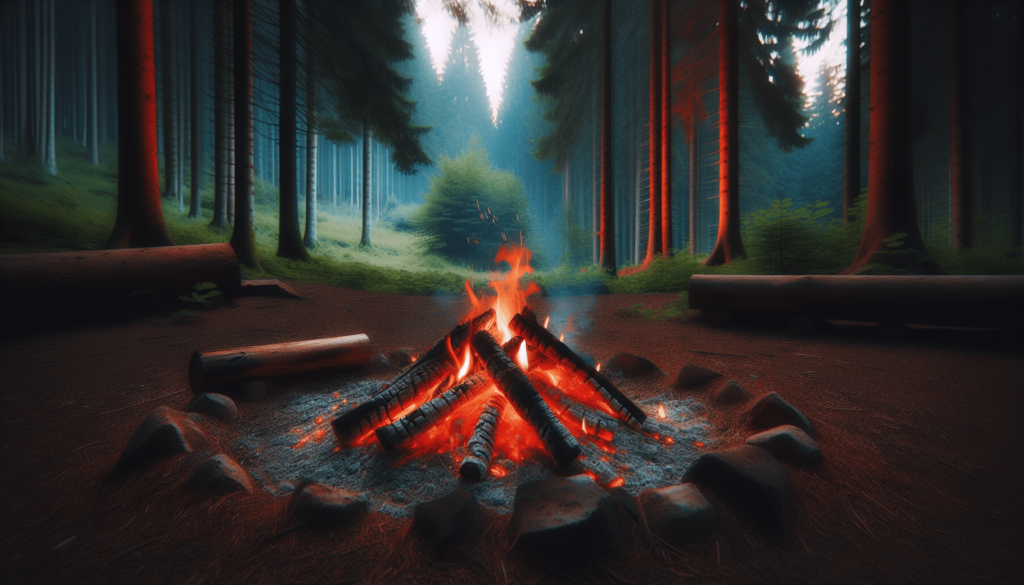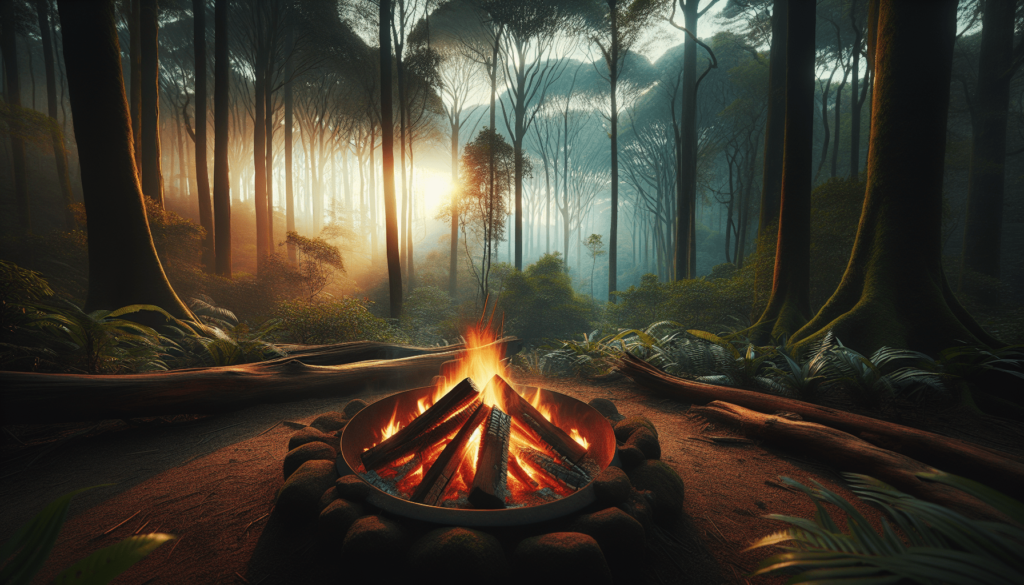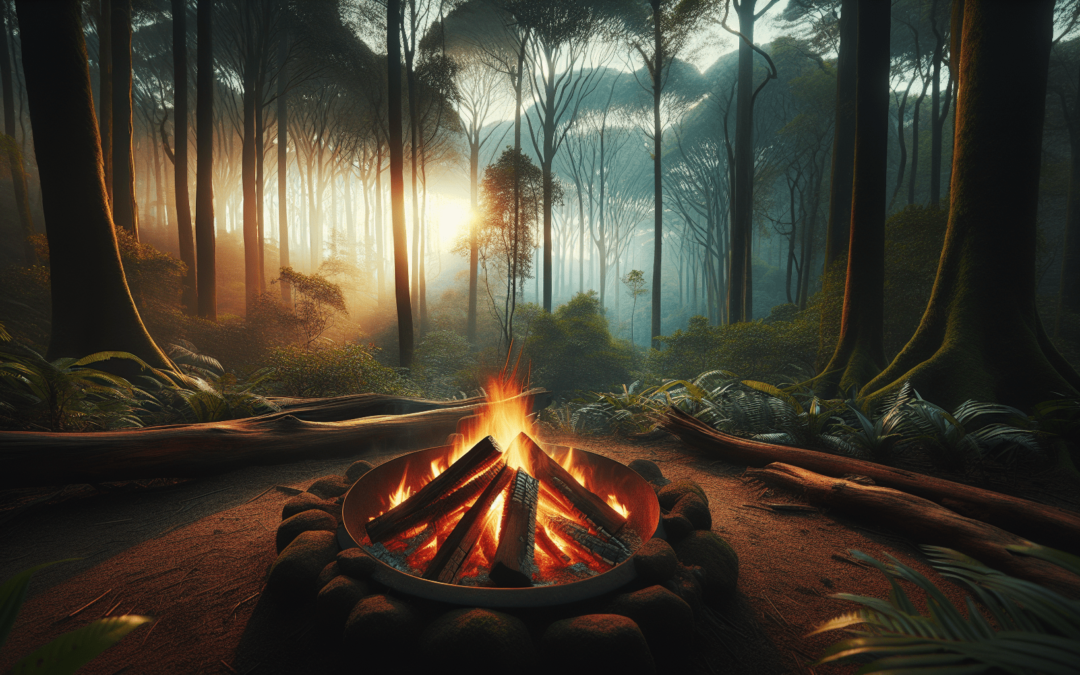Looking for ways to enjoy the warmth and comfort of a campfire without giving away your campsite? In “How To Create A Smokeless Fire For Stealth Camping,” you’ll discover practical techniques to build a nearly invisible fire that’s perfect for those who value discretion in the wilderness. From selecting the right materials to mastering fire-building methods, this guide will ensure you can enjoy a crackling, smokeless fire while keeping your campsite under the radar. It’s all about blending in with nature while making the most of your stealth camping experience. Have you ever been out in the wilderness, craving the warmth and comfort of a campfire, but concerned about being detected by others? Whether you’re a seasoned stealth camper or just someone looking to avoid the attention of bears and other wildlife, knowing how to build a smokeless fire can be invaluable.
In this guide, you’ll learn step-by-step how to create a smokeless fire perfect for stealth camping, including tips and tricks to ensure you remain under the radar.

Why a Smokeless Fire?
A smokeless fire offers numerous advantages beyond mere concealment. Firstly, it minimizes your footprint in nature, leaving fewer traces behind for other campers and wildlife. Secondly, a smokeless fire produces less carbon emissions, making it a greener choice. Finally, you’ll enjoy a cleaner cooking experience without the risk of your food being tainted by smoke.
Advantages of a Smokeless Fire
| Advantage | Description |
|---|---|
| Less Detectable | Harder for others or wildlife to spot you. |
| Eco-friendly | Produces fewer carbon emissions. |
| Cleaner Cooking | Food won’t taste like smoke. |
| Less Impact on Environment | Leaves fewer residues and pollutants. |
Basic Principles of Building a Smokeless Fire
To create a smokeless fire, you need to focus on the three primary elements: proper fuel, efficient oxygen flow, and optimal heat. Getting these elements right will minimize smoke production.
Types of Fuel
Selecting the right type of fuel is fundamental. Different fuels generate different amounts of smoke. Dry hardwoods like oak, maple, and hickory are excellent choices, as they burn hot and produce less smoke compared to softwoods like pine.
| Type of Wood | Characteristics | Smoke Production |
|---|---|---|
| Hardwood (oak, maple, hickory) | Dense, burns slower and hotter | Low |
| Softwood (pine, spruce) | Resinous, burns faster | High |
Efficient Oxygen Flow
Proper airflow is another key component. You need to construct your fire in a way that allows for sufficient oxygen to fuel the flame while keeping the smoke at bay.
Optimal Heat Generation
Your fire needs to be hot enough to ensure complete combustion of the fuel. Incomplete combustion usually results in smoke production.
Step-by-Step Guide to Creating a Smokeless Fire
Step 1: Pick the Right Location
While this may seem trivial, choosing your fire location can make a significant difference. Opt for a spot shielded from wind but not entirely enclosed. This helps control the airflow to your fire.
Ideal Locations
| Location Feature | Suitability |
|---|---|
| Shielded from Wind | Prevents smoke from spreading |
| Open Overhead Area | Ensures smoke rises straight up |
| Away from Dry Leaves and Twigs | Reduces fire hazard |
Step 2: Gather Dry Materials
Always use dry materials to minimize smoke. Wet or green wood produces steam, which can generate more smoke. Gather small to medium-sized dry twigs, dry leaves, and larger logs that are well-seasoned.
Step 3: Construct a Fire Pit
Dig a small pit around 3-4 inches deep and about a foot in diameter. Line the bottom with small stones to improve airflow.
Step 4: Build a Dakota Fire Hole
For ultimate stealth, consider building a Dakota Fire Hole. This underground fire method significantly reduces smoke and confines the fire to a small area.
How to Make a Dakota Fire Hole
- Dig Two Holes: Dig one hole, about a foot wide and a foot deep. Dig a second, smaller hole a few inches away. These holes should connect via a small tunnel at the bottom.
- Line with Stones: Line the holes and the connecting tunnel with small stones.
- Start Your Fire: Build the fire in the larger hole. The secondary hole serves as an air intake, ensuring efficient combustion.
Step 5: Arrange Your Fuel
Place a small pile of tinder (dry leaves or small twigs) at the bottom. Surround it with kindling (slightly larger twigs), and stack the larger logs in a crisscross pattern above.
Step 6: Ignite the Fire
Ignite your tinder using waterproof matches or a fire steel. Gradually add larger pieces of wood as the fire builds.
Step 7: Maintain the Fire
Once your fire is going, maintain it with occasional additions of dry, season wood. Moreover, stoking or blowing air into the fire can increase the heat and improve combustion, thereby reducing smoke.
Step 8: Extinguish Carefully
To leave no trace:
- Douse with Water: Ensure the fire is entirely out.
- Stir the Ashes: Stir the ashes to cool them down.
- Cover the Pit: Fill the pit with the previously removed dirt.
Additional Tips and Tricks
Using Natural Fire Starters
Dry bark from birch trees, pine needles, and dried-out fungi serve as excellent natural fire starters that produce minimal smoke.
Avoiding Certain Woods
Avoid using resinous woods such as pine or spruce, as their high sap content increases smoke production.
Creating Your Own Firestarters
Homemade fire starters like cotton balls soaked in petroleum jelly, wax-coated wood shavings, or even dryer lint can help you start a fire quickly with less smoke.
managing smoke backup
Backup smoke can occur when the flames are not hot enough to consume the fuel completely. Here’s how to manage it:
- Add Dry Wood: Adding more dry fuel can increase the flame’s temperature.
- Adjust Airflow: Reposition your wood to improve oxygen flow.
Closed Container or Portable Stove
If stealth is paramount, consider carrying a portable stove or closed fire container. Both these methods can provide heat, and cooking without exposing your fire.

Safety Measures
Being stealthy doesn’t mean compromising on safety. Always ensure you have adequate water or a fire extinguisher on hand to manage any unplanned fires.
Fire Hazard Prevention
- Clear the Area: Make sure the area around your fire is devoid of flammable material.
- Wind Awareness: Be mindful of changes in wind direction that might carry embers to flammable areas.
Leave No Trace
Always abide by the principles of “Leave No Trace.” Extinguish your fire entirely, and make sure the area is as clean, if not cleaner, than you found it.
Conclusion
Mastering the art of creating a smokeless fire can significantly enhance your stealth camping experience. From selecting the right kind of wood to constructing a Dakota Fire Hole, every step you take can minimize smoke and help you remain concealed. So, next time you’re out in the wilderness, put these tips to the test and enjoy the warmth and comfort of a fire without giving away your location. Happy stealth camping!

